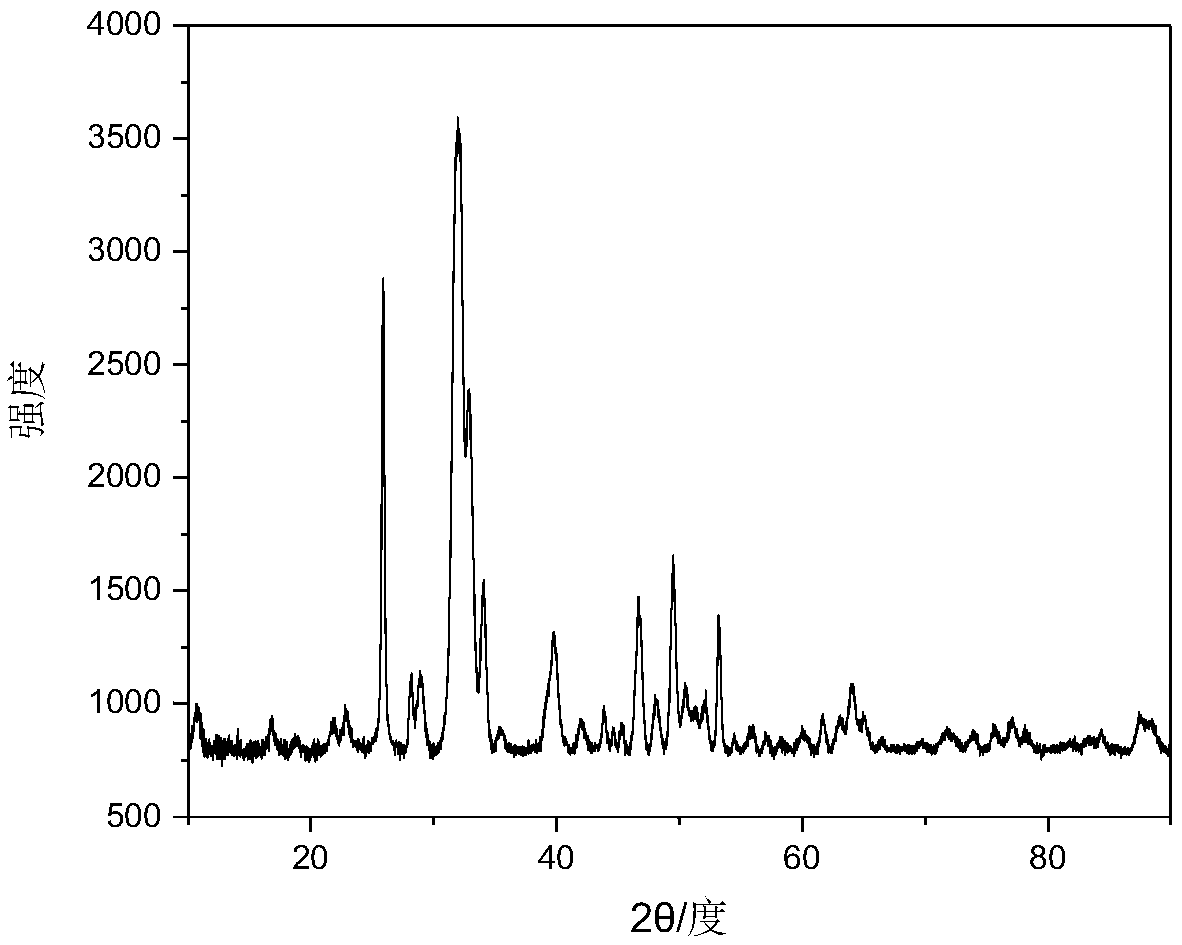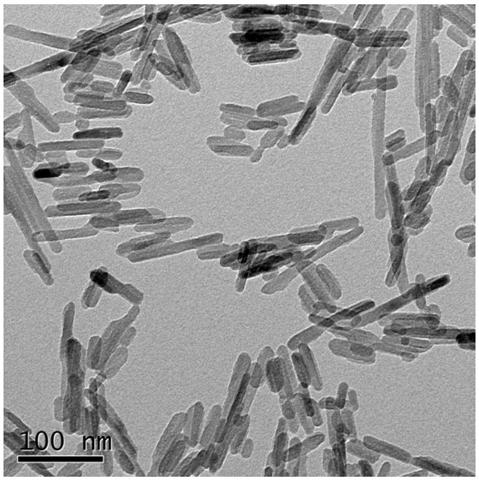Preparation method of fluorescent invisible ink based on hydroxyapatite nanocrystalline
A hydroxyapatite and invisible ink technology, applied in inks, household appliances, applications, etc., can solve the problems of unsatisfactory preparation cost, biocompatibility angle, few fluorescent hydroxyapatite nanocrystals, etc. The effect of implementation, good dispersion, and easy availability
- Summary
- Abstract
- Description
- Claims
- Application Information
AI Technical Summary
Problems solved by technology
Method used
Image
Examples
Embodiment 1
[0035] 1) 0.01 mol of calcium chloride was dissolved in 10 grams of deionized water to form solution A;
[0036] 2) 0.015mol sodium citrate and 0.007mol arginine were dissolved in 10 grams of deionized water to form solution B;
[0037] 3) 0.006mol disodium hydrogen phosphate is dissolved in 15 grams of deionized water to form solution C;
[0038] 4) Add solution B obtained in step 2) dropwise to solution A obtained in step 1) at room temperature, and fully stir for 15 min to form mixed solution 1;
[0039] 5) adding solution C obtained in step 3) dropwise to mixed solution 1 obtained in step 4) at room temperature, and fully stirring for 15 min to form mixed solution 2;
[0040] 6) Transfer the obtained mixed solution 2 of step 5) into a closed hydrothermal reactor, react at 190° C. for 3 hours, and then naturally cool to room temperature to obtain a reaction solution;
[0041] 7) The reaction solution obtained in step 6) is centrifuged with a high-speed centrifuge to obtai...
Embodiment 2
[0045] Embodiment 2: with embodiment 1, the difference is,
[0046] 1) 0.01 mol of calcium nitrate was dissolved in 10 grams of deionized water to form solution A;
[0047] 2) dissolve 0.003mol potassium citrate and 0.001mol norleucine in 10 grams of deionized water to form solution B;
[0048] 3) 0.006mol potassium phosphate is dissolved in 15 grams of deionized water to form solution C;
[0049] 6) Transfer the obtained mixed solution 2 of step 5) into a closed hydrothermal reactor, react at 120° C. for 12 hours, and naturally cool to room temperature to obtain a reaction solution;
[0050]7) Use a high-speed centrifuge to centrifuge the reaction solution in step 6) to obtain a precipitate. The precipitate is alternately centrifuged and washed three times with deionized water and absolute ethanol to remove excess electrolyte in the system, and then redispersed in deionized water. The particle mass concentration of the dispersion liquid is 0.1 wt%, and the pH of the dispers...
Embodiment 3
[0051] Embodiment 3, with embodiment 1, difference is,
[0052] 2) 0.006mol sodium citrate and 0.003mol arginine were dissolved in 10 grams of deionized water to form solution B;
[0053] 3) Dissolve 0.006 mol of dipotassium hydrogen phosphate in 15 grams of deionized water to form solution C;
[0054] 6) Transfer the mixed solution 2 obtained in step 5) to a closed hydrothermal reactor, react at 150° C. for 9 hours, and then naturally cool to room temperature to obtain a reaction solution;
[0055] 7) Use a high-speed centrifuge to centrifuge the reaction solution obtained in step 6) to obtain a precipitate. The precipitate is alternately centrifuged and washed three times with deionized water and absolute ethanol to remove excess electrolyte in the system, and then redispersed in deionized water , adjusting the particle mass concentration of the dispersion to 5 wt%, and adjusting the pH of the dispersion to 8.5 with 0.1M sodium hydroxide solution to obtain the hydroxyapatit...
PUM
| Property | Measurement | Unit |
|---|---|---|
| The average diameter | aaaaa | aaaaa |
| Average length | aaaaa | aaaaa |
Abstract
Description
Claims
Application Information
 Login to View More
Login to View More - Generate Ideas
- Intellectual Property
- Life Sciences
- Materials
- Tech Scout
- Unparalleled Data Quality
- Higher Quality Content
- 60% Fewer Hallucinations
Browse by: Latest US Patents, China's latest patents, Technical Efficacy Thesaurus, Application Domain, Technology Topic, Popular Technical Reports.
© 2025 PatSnap. All rights reserved.Legal|Privacy policy|Modern Slavery Act Transparency Statement|Sitemap|About US| Contact US: help@patsnap.com



